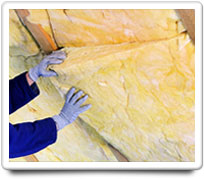Question Topic
Attic High Humidity

POLICY-Wizard™ calculates your ideal home care program to avoid problems with your Attic, but sometimes trouble can still occur. Here are answers to questions about attic high humidity.
QUESTION FROM johnmoore
We have an attic fan with temperture/humidity activation. The attic fan has been running constantly through the nights for the last several months (not sure about before that since this is a new house to us).
It is November and the typical daytime temps are around 30-50F and night temps around 10-30F.
Concerned, I placed a remote temperature/humidity monitor in the attic. What I found was that the humidity shoots up into the nineties as the sun goes down setting off the fan. It remains this high until the late morning/early afternoon. The temperture is the same as the outside as the attic is soffett/gable vented. I have no idea why the humidity is getting so high at nightfall.
Is it possible that the soffet is blocked? If so how would I check that and how could it get so humid in the attic when the indoor and outdoor humidity is below 40% or so?
Thanks for any insight you can offer.
ANSWER FROM POLICY-Wizard™
Dear John Moore:
There are three general reasons why humidity can become high in an attic: 1) poor ventilation; 2) improper insulation; and 3) heated air from living areas getting into the attic. Then as the temperature drops, the moisture condenses out of the cooler air.
Examples of poor ventilation can be from poorly designed or blocked roof vents, which depending on your particular home, could be ridge vents, gable vents, soffit vents, etc.
Examples of improper insulation include: insufficient or displaced insulation; insulation that blocks your roof vents; lack of vapor barriers; poor sealing of openings to warm living spaces; etc.
And then examples of heated air from living spaces can include: bathroom / shower fans that vent into the attic (or has ducting that goes through the attic which is leaking); stove fans that vent or leak into the attic; clothes dryers that vent or leak into the attic; wall spaces, especially from the area where your furnace is, that allow warm air to travel up inside the walls and then leak into the attic.
Of course, it could be a combination of several of the above.
Given that your humidity problem gets worse at night, the question is how much of this is due to the falling temperatures in the evening, versus it being because of things like cooking vents, bathroom/shower fans, furnace room air, etc. that could be coming on in the evening.
Is this helpful?
Home-Wizard.com

 Overview
Overview Routine Care
Routine Care Q & A
Q & A Articles
Articles